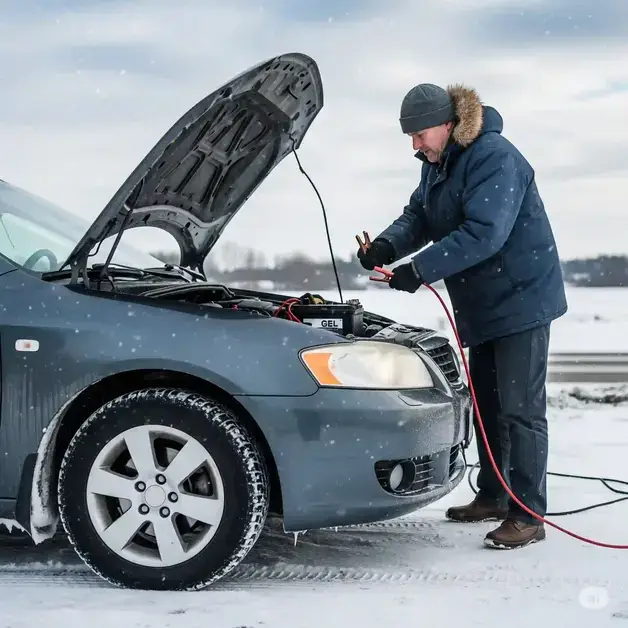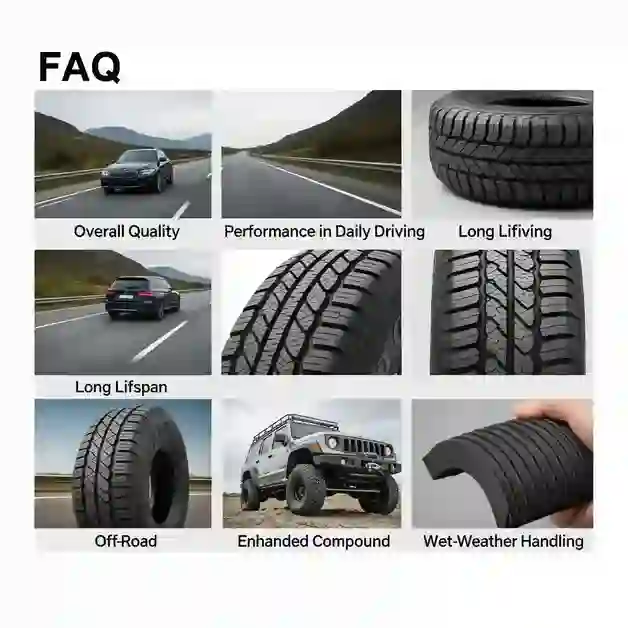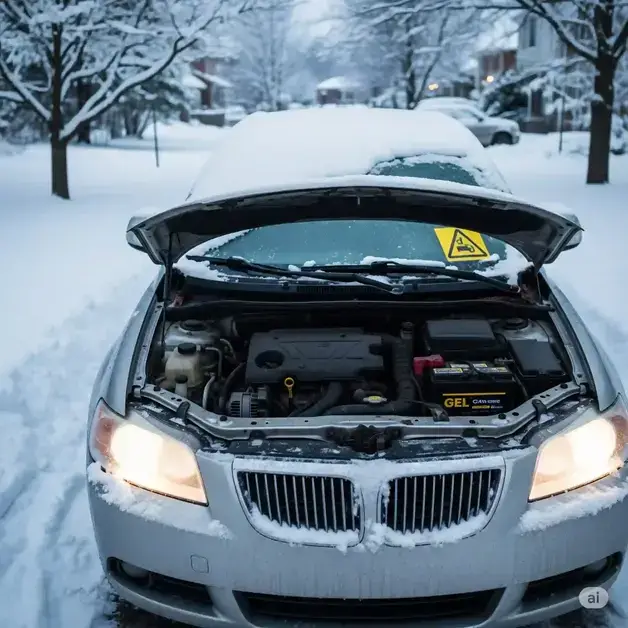I still remember the morning my old car battery died on a cold winter day. I was already running late, and nothing worked—not even the lights. After that mess, I started looking for a better option, something reliable and easy to manage. That’s when I came across gel car batteries. At first, I didn’t know much about them, but the more I learned—and experienced—the more I realized how different they are. If you’re tired of the usual battery headaches, this might be what you’ve been missing. Let’s talk about what makes them stand out—and where they fall short, too.
What I Like
After switching to gel car batteries a while ago, I’ve noticed some real improvements. I’ve used them in my daily car and also in a small boat setup. These points reflect what truly stood out to me.
- No more messy leaks – The sealed design means I don’t have to worry about acid spills or corrosion. That peace of mind is priceless, especially for someone like me who’s always on the go.
- Zero maintenance – I’ve not had to top up water or do any cleanup. That saves time and makes life easier, especially when you’re not the most tech-savvy.
- Runs well in the heat – Living in a hot climate, other batteries used to die quicker. These hold up way better when temperatures climb.
- Can be used in tight spaces – Because they don’t leak or fume, I’ve used them in my RV and marine setups without stressing about ventilation.
- Reliable for deep cycles – I use accessories a lot—like phone chargers and lights—without the engine running. This battery holds up well under frequent discharging.
What Could Be Better
Now, nothing is perfect—so here are a few things I’ve noticed that could improve. These aren’t deal-breakers, but things worth knowing before buying.
- Takes longer to charge – Compared to other types, it charges slower. I’ve had to adjust my routine to give it a full charge without rushing.
- Needs a proper charger – You can’t just plug it into any charger. I had to get one that works specifically with gel batteries, but once that was sorted, things went smoothly.
- A bit more expensive upfront – The price is higher than regular batteries, but considering the lifespan and performance, I see it as an investment.
My Personal Experience
I’ve been using gel car batteries across different vehicles and setups for over two years now. From daily driving to weekend trips on the lake, I’ve really come to trust them. Here’s how they’ve held up.
Design
At first glance, you can tell this battery was made for practicality. I liked that it didn’t need to sit in a specific position—it fits in tight spaces and awkward corners without a fuss. For someone who loves DIY setups, this flexibility was a real win. The sealed design gave me confidence to mount it where other batteries would be risky.
Performance
This is where it really impressed me. It holds a charge for long periods, even when the car sits idle. I’ve left my vehicle parked for weeks during trips, and it started up without hesitation. On my boat, it powers lights and gear for hours without signs of slowing down. That kind of stamina is rare and honestly a relief.
Build Quality
The build feels solid and rugged. Even after two years, it hasn’t shown signs of swelling or wear. The outer shell is thick and resists vibration, which matters a lot on rough roads or when I’m out fishing. You can tell the brand puts thought into long-term use, not just short-term power.
If you’re thinking about upgrading your car or RV battery, I’d say it’s worth looking into this kind. It won’t solve every problem, but it sure makes life smoother when you need power that’s clean, steady, and dependable.
 GEL Battery Problems and Solutions
GEL Battery Problems and Solutions
I’ve been using gel batteries for a while now—long enough to know they’re not perfect. Don’t get me wrong—they’re solid and dependable. But like anything else, they’ve got their quirks. I’ve hit a few snags myself and learned some handy fixes along the way. So, if your gel battery’s acting up, let’s walk through the common issues and how you can solve them—without stressing out.
Problem: Battery Not Holding Charge
One morning, my car just wouldn’t start. No lights. No crank. Nothing. I thought the battery was dead for good. But turns out, it wasn’t broken—just poorly charged.
If your gel battery won’t hold a charge, chances are it’s been sitting unused too long or discharged too deeply. Gel batteries don’t like to be drained below 50%. I learned this the hard way on a long camping trip when I kept running lights and a mini fan overnight.
Solution: Charge your battery regularly, even when not in use. Avoid deep discharges, and always use a gel-compatible charger. If your battery’s often running low, it’s probably working too hard—consider upgrading to a higher amp-hour rating.
Problem: Battery Charges Slowly or Never Fully
At first, I thought my new battery was faulty because it took forever to reach full charge. Turns out, the charger was the problem—not the battery.
Gel batteries need a specific charging profile. Using a basic or non-gel charger can slow charging or stop it altogether. I was using an old-school trickle charger, which just didn’t cut it.
Solution: Use a smart charger designed for gel batteries. Make sure the voltage and temperature compensation match the battery’s specs. I got one with an auto-regulate mode, and charging became smooth and quick again.
Problem: Battery Drains Fast
I once left my gel battery in storage for two months during the rainy season. When I came back, it was dead. I expected better.
Even though gel batteries have a low self-discharge rate, they still need occasional charging. Environmental factors—like heat, cold, or poor ventilation—can also drain them faster than you’d think.
Solution: Store your battery in a cool, dry place. Charge it every 30 days if not in use. And avoid installing it in areas with extreme heat or moisture—those really shorten its life. Trust me, I learned after replacing one too many batteries in my fishing boat.
Problem: Swelling or Leaking
This one’s scary—I saw a slight bulge on the side of my battery and panicked. I thought it might explode. But it was just overcharged.
Swelling often means your charger is pushing too much voltage, or your system has a short. Leaks are rare but can happen with the wrong setup or rough handling.
Solution: Always double-check your wiring. Make sure your charger matches your battery’s specs—don’t wing it. I started labeling cables and keeping a simple diagram in my glove box. It helps a ton when troubleshooting.
Honestly, gel batteries have been a game-changer for me. But they’re not “set it and forget it” unless you know how to treat them right. Think of them like a good pair of hiking boots—they’ll go the distance if you take care of them. Knowing how to spot issues early has saved me money, time, and frustration more than once.
If you’re running into any of these problems, don’t give up on your battery just yet. A few small changes can bring it back to life—and help you get the most from it over the long haul.
Common Gel Battery Problems and Fixes
Sometimes it helps to have everything in one spot—especially when you’re stuck with a dead battery halfway through a trip. I keep this cheat sheet taped inside my RV cabinet. It’s saved me more times than I can count. Maybe it’ll help you too.
|
Problem |
What Might Be Causing It |
What Worked for Me |
|
Battery won’t hold a charge |
Drained too low or just old | I charge it often and avoid dropping below 50%. A smart charger helps a lot. |
| Takes forever to charge | Wrong charger or bad voltage |
I switched to a gel-safe charger with auto temp settings. Big difference. |
|
Drains fast when sitting |
Heat, cold, or long storage | I charge it once a month in the off-season and keep it cool and dry. |
| Never reaches full charge | Low voltage or dying battery |
I checked the settings. When that didn’t help, I swapped it for a new one. |
|
Swollen or leaking battery |
Too much charge or bad wiring | I replaced the charger and traced the wiring. No more swelling since. |
| Looks beat-up on arrival | Rough shipping or poor packaging |
I took pictures and emailed the seller. They replaced it quickly. |
I’ve learned that most of these issues are easy to avoid. Just stay ahead with a few smart habits and the right tools.
Gel battery problems like slow charging or swelling often come from deep discharges, heat, or the wrong charger. A smart charger and regular care can fix most of them.
 FAQs About Gel Car Batteries
FAQs About Gel Car Batteries
- What is a gel car battery used for?
A gel car battery is used in cars, RVs, boats, and backup systems. It works well in hot weather and small spaces without leaking or needing maintenance. - Are gel batteries better than regular car batteries?
Gel batteries last longer, don’t leak, and need no upkeep. But they cost more and charge slower than regular car batteries. Many prefer them for safety and ease. - Why is my gel car battery not holding a charge?
Gel batteries don’t like deep discharges. If it’s drained below 50% often or left unused, it won’t hold a charge well. Use a smart charger to help it recover. - How do I charge a gel car battery properly?
Use a smart charger made for gel batteries. It should match the battery’s voltage and adjust for temperature. Avoid overcharging or fast modes. - Why does my gel battery take so long to charge?
Gel batteries charge slower by design. A regular charger may not work well. Use a charger with a gel setting to speed things up safely. - Can I use a gel battery in hot weather?
Yes, gel batteries work well in heat. They resist drying out and can handle high temps better than regular flooded batteries. - What happens if a gel battery swells?
Swelling often means overcharging. Stop using it, check the charger’s voltage, and inspect the wiring. Replace the charger if needed. - Do gel car batteries need maintenance?
No, gel batteries are sealed and maintenance-free. You don’t need to add water or clean terminals like with regular car batteries. - Can a gel battery be used in an RV or boat?
Yes, gel batteries are great for RVs and boats. They don’t leak, handle vibrations well, and work in tight spots without needing ventilation. - How long do gel car batteries last?
With proper care, a gel battery can last 4 to 6 years. Avoid deep discharges, use the right charger, and store it in a cool, dry place.
Conclusion
Gel car batteries aren’t perfect, but they’ve made my life on the road—and on the water—a lot easier. From worry-free starts in the heat to safe storage in my RV, they’ve earned my trust. Yes, they charge slow and cost more upfront, but the trade-off is worth it if you need steady, clean power. Just treat them right—charge smart, avoid deep drains, and keep them cool—and they’ll return the favor with reliable performance for years. If you’re tired of dead batteries and messy maintenance, a gel battery might be the upgrade you’ve been looking for.

